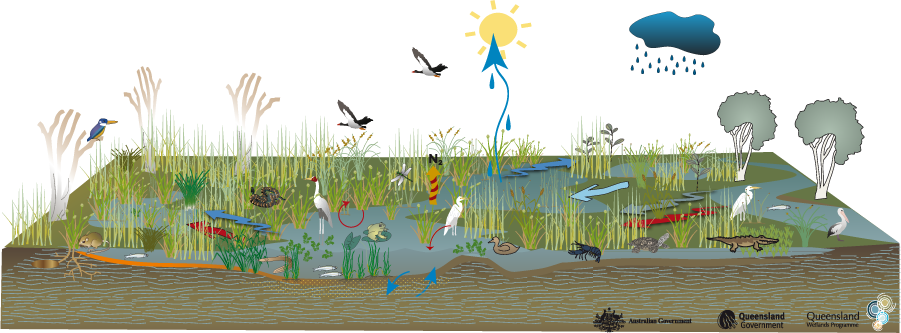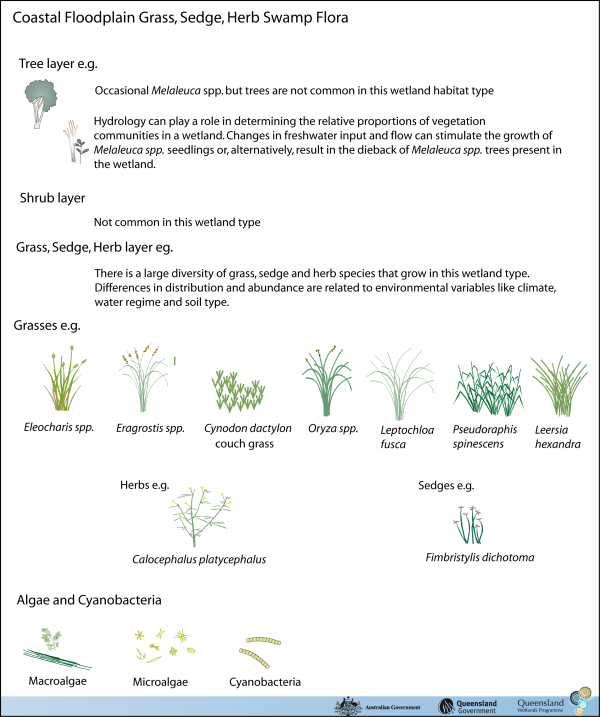|
|
Coastal and subcoastal floodplain grass, sedge, herb swampCoastal and subcoastal floodplain grass, sedge, herb swamp – FloraClick on elements of the model or select from the tabs below As the name suggests, coastal floodplain grass, sedge and herb swamps are dominated by grasses (family Poaceae) and/or sedges (principally from the Cyperaceae and Restionaceae families) and herbs (from a variety of families). There is a general trend towards grass dominating in the north (Gulf of Carpentaria catchments) and sedges dominating elsewhere (east coast catchments), but rainfall and other factors also play a part. Herbs tend to be more abundant in cooler areas, where there is winter rainfall. Sometimes grass and sedge herb swamps can be dominated by a single species or genus (e.g. Eleocharis spp.) while in other locations, this wetland habitat type can exhibit a greater species diversity. Occasional trees and shrubs may be encountered, especially along traversing channels. However, vegetation rarely exceeds 2 m in height and is mostly below 1 m. The vegetation communities include both perennial and annual plants. At the driest time of year, some floodplain grass, sedge and herb swamp habitats may display a persistent cover of erect (though partly collapsed) vegetation whereas others may have little, if any, erect vegetation. Algae and cyanobacteria (blue-green algae) growth can follow a wet flush/local rainfall. See aquatic habitat for species that occur in deeper parts of these habitats.
Last updated: 22 March 2013 This page should be cited as: Department of the Environment, Tourism, Science and Innovation, Queensland (2013) Coastal and subcoastal floodplain grass, sedge, herb swamp – Flora, WetlandInfo website, accessed 15 December 2025. Available at: https://wetlandinfo.detsi.qld.gov.au/wetlands/ecology/aquatic-ecosystems-natural/palustrine/floodplain-grass-sedge-herb-swamp/flora.html |

 — Department of the Environment, Tourism, Science and Innovation
— Department of the Environment, Tourism, Science and Innovation




